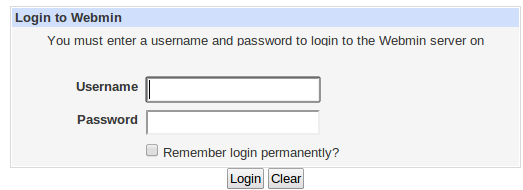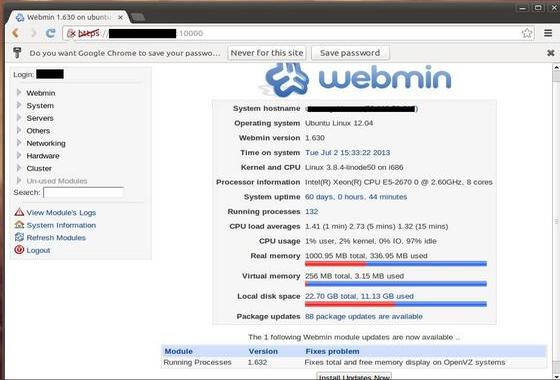Thanks Mr. Graham.
#include "proto-http.h"
#include "proto-banner1.h"
#include "smack.h"
#include "unusedparm.h"
#include "string_s.h"
#include "masscan-app.h"
#include <ctype.h>
#include <stdint.h>
#include <stdlib.h>
#include <string.h>
enum {
HTTPFIELD_INCOMPLETE,
HTTPFIELD_SERVER,
HTTPFIELD_CONTENT_LENGTH,
HTTPFIELD_CONTENT_TYPE,
HTTPFIELD_VIA,
HTTPFIELD_LOCATION,
HTTPFIELD_UNKNOWN,
HTTPFIELD_NEWLINE,
};
static struct Patterns http_fields[] = {
{"Server:", 7, HTTPFIELD_SERVER, SMACK_ANCHOR_BEGIN},
//{"Content-Length:", 15, HTTPFIELD_CONTENT_LENGTH, SMACK_ANCHOR_BEGIN},
//{"Content-Type:", 13, HTTPFIELD_CONTENT_TYPE, SMACK_ANCHOR_BEGIN},
{"Via:", 4, HTTPFIELD_VIA, SMACK_ANCHOR_BEGIN},
{"Location:", 9, HTTPFIELD_LOCATION, SMACK_ANCHOR_BEGIN},
{":", 1, HTTPFIELD_UNKNOWN, 0},
{"\n", 1, HTTPFIELD_NEWLINE, 0},
{0,0,0,0}
};
enum {
HTML_INCOMPLETE,
HTML_TITLE,
HTML_UNKNOWN,
};
static struct Patterns html_fields[] = {
{"<TiTle", 6, HTML_TITLE, 0},
{0,0,0,0}
};
extern struct ProtocolParserStream banner_http;
/***************************************************************************
***************************************************************************/
unsigned
http_change_field(unsigned char **inout_header, unsigned header_length,
const char *field_name,
const unsigned char *field_value, unsigned field_value_len)
{
unsigned char *hdr1 = *inout_header;
unsigned char *hdr2;
unsigned i;
unsigned is_newline_seen = 0;
unsigned field_name_len = (unsigned)strlen(field_name);
hdr2 = (unsigned char *)malloc(header_length + field_value_len + 1 + 2);
memcpy(hdr2, hdr1, header_length);
/* Remove the previous header and remember the location in the header
* where it was located */
for (i=0; i<header_length; i++) {
if (hdr2[i] == '\r')
continue;
if (hdr2[i] == '\n') {
if (is_newline_seen) {
/* We've reached the end of header without seing
* the field. Therefore, create space right here
* for it. */
while (hdr2[i-1] == '\r')
i--;
break;
} else if (memcasecmp(&hdr2[i+1], field_name, field_name_len) == 0) {
unsigned j;
i++; /* skip previous newline */
for (j=i; j<header_length && hdr2[j] != '\n'; j++)
;
if (j < header_length && hdr2[j] == '\n')
j++;
memmove( &hdr2[i],
&hdr2[j],
header_length - j);
header_length -= (j - i);
hdr2[header_length] = '\0';
break;
}
}
}
/* Insert the new header at this location */
memmove( &hdr2[i + field_name_len + field_value_len + 1 + 2],
&hdr2[i],
header_length - i);
memcpy( &hdr2[i],
field_name,
field_name_len);
memcpy( &hdr2[i + field_name_len],
" ",
1);
memcpy( &hdr2[i + field_name_len + 1],
field_value,
field_value_len);
memcpy( &hdr2[i + field_name_len + 1 + field_value_len],
"\r\n",
2);
header_length += field_name_len + 1 + field_value_len + 2;
free(hdr1);
*inout_header = hdr2;
return header_length;
}
/***************************************************************************
***************************************************************************/
static const char
http_hello[] = "GET / HTTP/1.0\r\n"
"User-Agent: masscan/1.0 (https://github.com/robertdavidgraham/masscan)\r\n"
"Accept: */*\r\n"
//"Connection: Keep-Alive\r\n"
//"Content-Length: 0\r\n"
"\r\n";
/*****************************************************************************
*****************************************************************************/
void
field_name(struct BannerOutput *banout, size_t id,
struct Patterns *xhttp_fields);
void
field_name(struct BannerOutput *banout, size_t id,
struct Patterns *xhttp_fields)
{
unsigned i;
if (id == HTTPFIELD_INCOMPLETE)
return;
if (id == HTTPFIELD_UNKNOWN)
return;
if (id == HTTPFIELD_NEWLINE)
return;
for (i=0; xhttp_fields[i].pattern; i++) {
if (xhttp_fields[i].id == id) {
banout_newline(banout, PROTO_HTTP);
banout_append( banout, PROTO_HTTP,
(const unsigned char*)xhttp_fields[i].pattern
+ ((xhttp_fields[i].pattern[0]=='<')?1:0), /* bah. hack. ugly. */
xhttp_fields[i].pattern_length
- ((xhttp_fields[i].pattern[0]=='<')?1:0) /* bah. hack. ugly. */
);
return;
}
}
}
/*****************************************************************************
* Initialize some stuff that's part of the HTTP state-machine-parser.
*****************************************************************************/
static void *
http_init(struct Banner1 *b)
{
unsigned i;
/*
* These match HTTP Header-Field: names
*/
b->http_fields = smack_create("http", SMACK_CASE_INSENSITIVE);
for (i=0; http_fields[i].pattern; i++)
smack_add_pattern(
b->http_fields,
http_fields[i].pattern,
http_fields[i].pattern_length,
http_fields[i].id,
http_fields[i].is_anchored);
smack_compile(b->http_fields);
/*
* These match HTML <tag names
*/
b->html_fields = smack_create("html", SMACK_CASE_INSENSITIVE);
for (i=0; html_fields[i].pattern; i++)
smack_add_pattern(
b->html_fields,
html_fields[i].pattern,
html_fields[i].pattern_length,
html_fields[i].id,
html_fields[i].is_anchored);
smack_compile(b->html_fields);
banner_http.hello = (unsigned char*)malloc(banner_http.hello_length);
memcpy((char*)banner_http.hello, http_hello, banner_http.hello_length);
return b->http_fields;
}
/***************************************************************************
* BIZARRE CODE ALERT!
*
* This uses a "byte-by-byte state-machine" to parse the response HTTP
* header. This is standard practice for high-performance network
* devices, but is probably unfamiliar to the average network engineer.
*
* The way this works is that each byte of input causes a transition to
* the next state. That means we can parse the response from a server
* without having to buffer packets. The server can send the response
* one byte at a time (one packet for each byte) or in one entire packet.
* Either way, we don't. We don't need to buffer the entire response
* header waiting for the final packet to arrive, but handle each packet
* individually.
*
* This is especially useful with our custom TCP stack, which simply
* rejects out-of-order packets.
***************************************************************************/
static void
http_parse(
const struct Banner1 *banner1,
void *banner1_private,
struct ProtocolState *pstate,
const unsigned char *px, size_t length,
struct BannerOutput *banout,
struct InteractiveData *more)
{
unsigned state = pstate->state;
unsigned i;
unsigned state2;
unsigned log_begin = 0;
unsigned log_end = 0;
size_t id;
enum {
FIELD_START = 9,
FIELD_NAME,
FIELD_COLON,
FIELD_VALUE,
CONTENT,
CONTENT_TAG,
CONTENT_FIELD
};
UNUSEDPARM(banner1_private);
UNUSEDPARM(more);
state2 = (state>>16) & 0xFFFF;
id = (state>>8) & 0xFF;
state = (state>>0) & 0xFF;
for (i=0; i<length; i++)
switch (state) {
case 0: case 1: case 2: case 3: case 4:
if (toupper(px[i]) != "HTTP/"[state])
state = STATE_DONE;
else
state++;
break;
case 5:
if (px[i] == '.')
state++;
else if (!isdigit(px[i]))
state = STATE_DONE;
break;
case 6:
if (isspace(px[i]))
state++;
else if (!isdigit(px[i]))
state = STATE_DONE;
break;
case 7:
/* TODO: look for 1xx response code */
if (px[i] == '\n')
state = FIELD_START;
break;
case FIELD_START:
if (px[i] == '\r')
break;
else if (px[i] == '\n') {
state2 = 0;
state = CONTENT;
log_end = i;
banout_append(banout, PROTO_HTTP, px+log_begin, log_end-log_begin);
log_begin = log_end;
break;
} else {
state2 = 0;
state = FIELD_NAME;
/* drop down */
}
case FIELD_NAME:
if (px[i] == '\r')
break;
id = smack_search_next(
banner1->http_fields,
&state2,
px, &i, (unsigned)length);
i--;
if (id == HTTPFIELD_NEWLINE) {
state2 = 0;
state = FIELD_START;
} else if (id == SMACK_NOT_FOUND)
; /* continue here */
else if (id == HTTPFIELD_UNKNOWN) {
/* Oops, at this point, both ":" and "Server:" will match.
* Therefore, we need to make sure ":" was found, and not
* a known field like "Server:" */
size_t id2;
id2 = smack_next_match(banner1->http_fields, &state2);
if (id2 != SMACK_NOT_FOUND)
id = id2;
state = FIELD_COLON;
} else
state = FIELD_COLON;
break;
case FIELD_COLON:
if (px[i] == '\n') {
state = FIELD_START;
break;
} else if (isspace(px[i])) {
break;
} else {
//field_name(banout, id, http_fields);
state = FIELD_VALUE;
/* drop down */
}
case FIELD_VALUE:
if (px[i] == '\r')
break;
else if (px[i] == '\n') {
state = FIELD_START;
break;
}
switch (id) {
case HTTPFIELD_SERVER:
case HTTPFIELD_LOCATION:
case HTTPFIELD_VIA:
//banner_append(&px[i], 1, banout);
break;
case HTTPFIELD_CONTENT_LENGTH:
if (isdigit(px[i]&0xFF)) {
; /*todo: add content length parsing */
} else {
id = 0;
}
break;
}
break;
case CONTENT:
{
unsigned next = i;
id = smack_search_next(
banner1->html_fields,
&state2,
px, &next, (unsigned)length);
if (banner1->is_capture_html) {
banout_append(banout, PROTO_HTML_FULL, &px[i], next-i);
}
if (id != SMACK_NOT_FOUND) {
state = CONTENT_TAG;
}
i = next - 1;
}
break;
case CONTENT_TAG:
for (; i<length; i++) {
if (banner1->is_capture_html) {
banout_append_char(banout, PROTO_HTML_FULL, px[i]);
}
if (px[i] == '>') {
state = CONTENT_FIELD;
break;
}
}
break;
case CONTENT_FIELD:
if (banner1->is_capture_html) {
banout_append_char(banout, PROTO_HTML_FULL, px[i]);
}
if (px[i] == '<')
state = CONTENT;
else {
banout_append_char(banout, PROTO_HTML_TITLE, px[i]);
}
break;
case STATE_DONE:
default:
i = (unsigned)length;
break;
}
if (log_end == 0 && state < CONTENT)
log_end = i;
if (log_begin < log_end)
banout_append(banout, PROTO_HTTP, px + log_begin, log_end-log_begin);
if (state == STATE_DONE)
pstate->state = state;
else
pstate->state = (state2 & 0xFFFF) << 16
| (id & 0xFF) << 8
| (state & 0xFF);
}
/***************************************************************************
***************************************************************************/
static int
http_selftest(void)
{
return 0;
}
/***************************************************************************
***************************************************************************/
struct ProtocolParserStream banner_http = {
"http", 80, http_hello, sizeof(http_hello)-1, 0,
http_selftest,
http_init,
http_parse,
};

![[Image: uCronQr.png?1]](http://i.imgur.com/uCronQr.png?1)
![[Image: bJmKgN4.png?1]](http://i.imgur.com/bJmKgN4.png?1)
![[Image: 1nmXbDC.png?1]](http://i.imgur.com/1nmXbDC.png?1)
![[Image: e2NsiXq.png?1]](http://i.imgur.com/e2NsiXq.png?1)
![[Image: 5O1m2Ut.png?1]](http://i.imgur.com/5O1m2Ut.png?1)
![[Image: ZD8eR1H.png?1]](http://i.imgur.com/ZD8eR1H.png?1)
![[Image: FQfpfmN.png?1]](http://i.imgur.com/FQfpfmN.png?1)
![[Image: wb092wT.png?1]](http://i.imgur.com/wb092wT.png?1)
![[Image: VaefWio.png?1]](http://i.imgur.com/VaefWio.png?1)
![[Image: PyQg2Sc.png?1]](http://i.imgur.com/PyQg2Sc.png?1)
![[Image: fxszA57.png?1]](http://i.imgur.com/fxszA57.png?1)
![[Image: sitelogo.png]](http://nmap.org/images/sitelogo.png)
![[Image: IXcgJ.png]](http://i.imgur.com/IXcgJ.png)
![[Image: logooxid.png]](http://www.oxid.it/images/logooxid.png)
![[Image: logo.png]](http://www.metasploit.com/images/global/logo.png)
![[Image: HkR4k.png]](http://i.imgur.com/HkR4k.png)

![[Image: 7diZx.png]](http://i.imgur.com/7diZx.png)
![[Image: logo_small.png]](http://www.kismetwireless.net/logo_small.png)

![[Image: YLv2g.png]](http://i.imgur.com/YLv2g.png)

![[Image: JuEqY.png]](http://i.imgur.com/JuEqY.png)
![[Image: L4fYp.png]](http://i.imgur.com/L4fYp.png)
![[Image: 6GXN9.png]](http://i.imgur.com/6GXN9.png)


Ever experience this Horse Manure ?
“SIOCSIFFLAGS: Operation not possible due to RF-kill”?